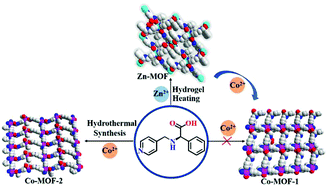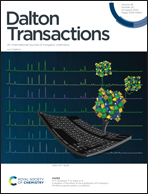Crystal structures and the ferroelectric properties of homochiral metal–organic frameworks constructed from a single chiral ligand†
Abstract
MOFs have proven to be promising candidates for designing ferroelectric materials. Herein, two new homochiral MOFs, Co-MOF-1 and Co-MOF-2, have been synthesized using the chiral ligand, HL (HL = phenyl-((pyridin-4-ylmethyl)-amino)-acetic acid), and Co(NO3)2·6H2O. Co-MOF-1 was obtained via a two-step synthetic route involving a hydrogel to Zn-MOF conversion and a dissolution–recrystallization process. Co-MOF-2 was directly synthesized by a coordination reaction between chiral ligand, HL, and Co(NO3)2·6H2O under hydrothermal conditions. We investigate the correlation between the ferroelectric properties of the samples and their crystal structures. The ferroelectric properties of Co-MOF-1 and Co-MOF-2 are drastically different. Indeed, Co-MOF-2 shows an obvious hysteretic behavior, while a clear electric hysteresis loop was not observed for Co-MOF-1. These significant disparities may be attributed to the different molecular dipole moments in Co-MOF-1 and Co-MOF-2. The different octahedral coordination units in the molecular structures of the Co-MOFs may alter the dipole moments of the molecules, resulting in the absence of a hysteresis loop for Co-MOF-1.



 Please wait while we load your content...
Please wait while we load your content...